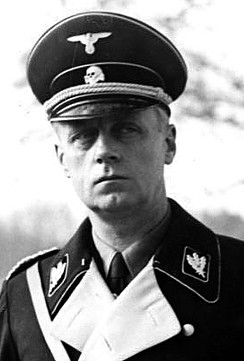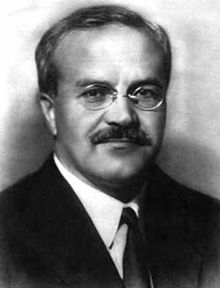The Russo-German Alliance: August 1939 – June 1941, by A. Rossi (Angelo Tasca) 1949


This study of German – Soviet relations during the crucial period between 1939 and 1941 was completed, in its essentials, well before the official publication of the documents discovered by the Allies in the archives of the Wilhelmstrasse, Nazi – Soviet Relations 1939-41: Documents from the Archives of the German Foreign Office (Department of State, Washington, 1948).
A large number of these documents were consulted in the original German, as were many others which, while they have no direct bearing on German – Soviet relations, have helped us to understand them more clearly and to assess their relative importance both in the wider field of the political and military events of the period and in their general development.
So far as the German archives are concerned, we have drawn upon four main sources for this book: (a) the documents now published by the American government, which will be referred to under the title Nazi – Soviet Relations 1939-41; (b) further German documents still unpublished; (c) a number of facts which came out in the interrogation, under DC Poole, of the responsible Nazis in Germany; (d) the documents produced at the Nuremberg trial, a large selection of which has been published by Messrs RW Barrett and WE Jackson at the instigation of the American Chief Counsel for the Prosecution, Mr Robert H Jackson, Nazi Conspiracy and Aggression (Washington, 1946, eight volumes, with one supplementary volume).
There has, in the meantime, been a prodigious output of sensational material, which the popular press has seized with both hands. This has not been ignored, although we have as a rule disregarded it. But with these purely mercenary effusions, other works have begun to appear which make an important and sometimes conclusive contribution to the study of the period under review, that is, the period from the beginning of 1939 to the outbreak of war between Germany and Soviet Russia.
The Nuremberg files are now being opened. The minutes of the meetings held throughout the war by Hitler and the chiefs of the German navy (first Raeder, then Dönitz) have been published by the British and American Admiralties in a very limited edition, Führer Conferences on Naval Affairs (seven parts, Washington and London), from 3 September 1939 to 18 April 1945. [1]
To this must be added Ciano’s Diary, [2] which is of unquestionable historical value, although like all works of this kind it should be taken with a grain of salt. Its value has just been confirmed, and even reinforced, by the recent publication in the original Italian of the conversations of Mussolini and Ciano with Hitler, Ribbentrop and many other government leaders and foreign diplomats between 1936 and 1942, L'Europa verso la catastrofe, La Storia d'Europa dal 1936 al 1942, in 184 colloqui di Mussolini, Hitler, etc (Mondadori, Milan, 1948.) [3] Special mention must be made of a volume of memoirs by an Italian diplomat, M Leonardo Simoni, who from October 1939 to September 1943 was attached to the Italian Embassy in Berlin, Berlino Ambasciata d'Italia (1939-43) (Migliaresi, Rome, 1946).
These are only the main sources used; others will be mentioned in the footnotes wherever acknowledgments are due.
We do not claim to have written the last word on this subject, for that would be a rash claim to make. But because of the quantity and nature of the documents available, it is now possible to settle numerous problems once and for all. It is these problems which we have endeavoured to sort out in this book.
Paris
July 1948
1. The page references given in this translation are to the edition issued by the British Admiralty in October 1947.
2. Ciano’s Diary, 1939-43 (London, 1947).
3. Translated into English under the title Ciano’s Diplomatic Papers (London, 1948).
Since this work was written, a number of publications have appeared which deal with the same period and subject. They are mentioned in Mr Max Beloff’s book, which is a very conscientious and well-informed reassessment of the development of Soviet foreign policy up to the conflagration in July 1941, The Foreign Policy of Soviet Russia, Volume 2, 1936-41 (Oxford University Press, 1949).
The German documents published by the Soviet government, Documents et Matériaux se rapportant à la veille de la dernière guerre mondiale (two volumes, Foreign Language Publications, Moscow, 1948) do not refer – and with good reason – to German – Soviet relations. The Documents on British Foreign Policy (London, HMSO) have not yet reached the period with which this study is concerned. And the Italian Documenti diplomatici covering the period will apparently not appear for several years. The reports and documents on the trial of the high-ranking Wilhelmstrasse officials at Nuremberg in the spring of 1948 will undoubtedly contain some new material, and it is to be hoped that they will be published in full as soon as possible. The few specimens we were able to examine not only confirmed that they were of great interest but left us with the impression that they will, on the whole, reinforce the general conclusions we reached in 1948.
Up to the present none of these conclusions has been invalidated by anything that has come to our notice from other sources since the book was written. This does not mean, however, that it has not been found necessary to modify certain details in the original analysis contained in our first narrative. The earlier text has been revised as scrupulously as possible in the light of later research. This translation, through which the book is now made available to English-speaking readers, can therefore be regarded as a new and revised edition.
Paris
November 1949